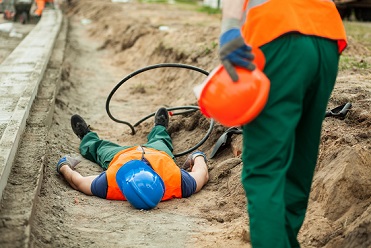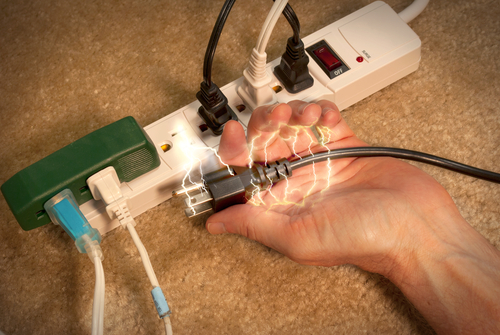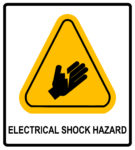Annually, there are around one thousand reported electrical injuries within the workplace in the UK. Around 30 of these are fatal. Mains electricity, high voltage cables, batteries, static and even lightning can all be dangers within the workplace.
Sustaining the Injury
A government report by the Health and Safety Executive shows that the most common injuries and deaths come from direct contact with an electrical charge and can be a direct result of many reasons, including:
- Badly maintained equipment, especially portable electrical equipment.
- Items or machines coming into contact with overhead power lines.
- The use of unsuitable electrical equipment in wet areas or areas where there is the risk of explosion.
- Coming into contact with underground power lines while using hand tools or machinery.
- Working with live mains power.
- When a body part comes into contact with or close to a live source of electricity.

The body will convulse as the electricity passes through the muscles. The amount of damage or injury caused will depend on the size of the current passing through the body and the length of time that the person was in contact with the current. Also, the path the electricity took through the body will affect what injury occurs.
A current of as little of 60mA can be fatal if the conditions are wet because this reduces the body’s resistance and can affect the heart’s electrical activity causing cardiac arrest. Burns are also a problem as the electricity enters the body but also as it exits the body. These burns can be very severe. As the electricity penetrates deep into the body these burns can be very painful and slow to heal. Electricity can also cause sparks and this can result in fire or explosion.
First Aid Treatment

The first thing to do is to ensure that the scene is safe as you do not want to be injured yourself. The patient may be “live” if they are still in contact with the supply so be aware of touching them. If in any doubt, touch them with the back of your hand so when your muscles contract you do not grip the live object. If they are not live, check to see if they are breathing. You may establish this by talking to them as you approach. If they are not breathing, you will need to deliver CPR. If they are breathing but unconscious, you place them in the recovery position and look for other injuries. Also, make sure that their airway is clear.
If no urgent First Aid procedures are required, then you need to assess for injuries. A very common injury related to electrical incidents is burns. Patients can be burnt by touching hot metal which has been heated by the electricity even if they have not been electrocuted. Other injuries can be caused by falling or being thrown back, or by flying objects, sharp exposed wires or melted dripping plastic. Finally, children can be in danger of electrical injuries from sockets, playing with electrical equipment or through damaging equipment or wires. Care and precautions should be taken anywhere children and electricity could come into contact with each other.
For more information on training courses, visit our “Courses” page which also includes our First Responder and First Person on Scene (FPOS) Courses.


Pingback: Suspension trauma is one scenario, that of someone being suspended.
Pingback: Can children learn First Aid? - First Aid Wiki